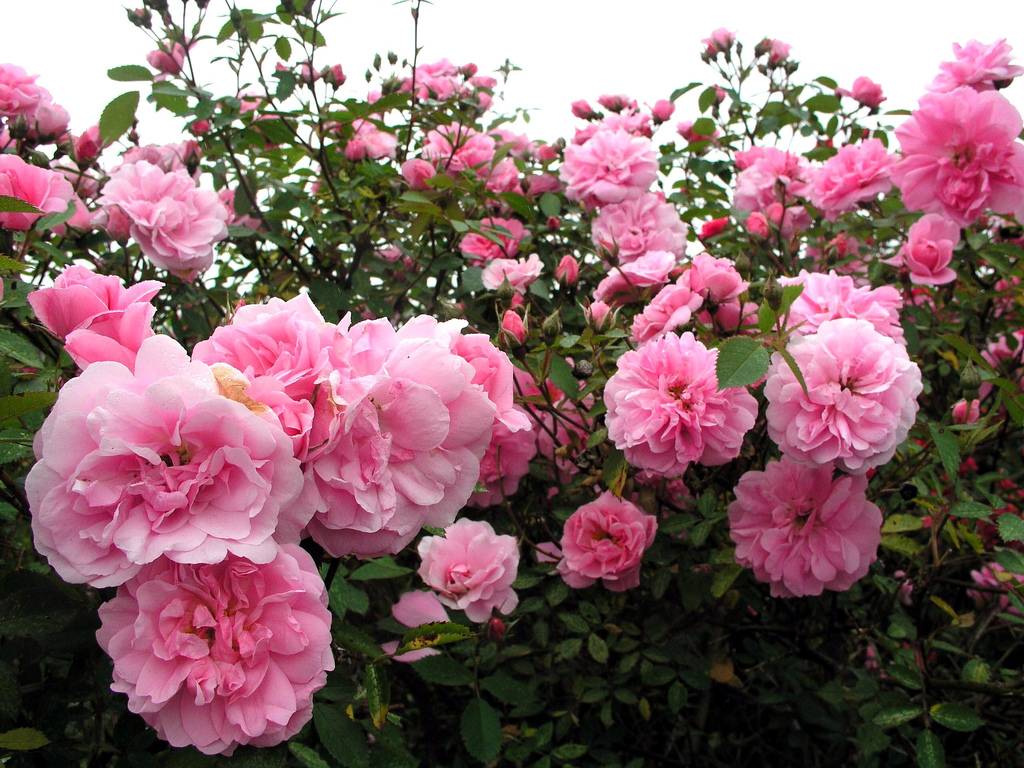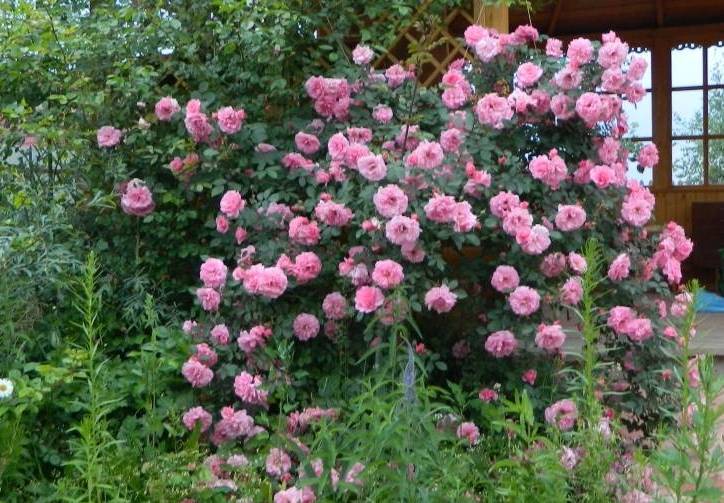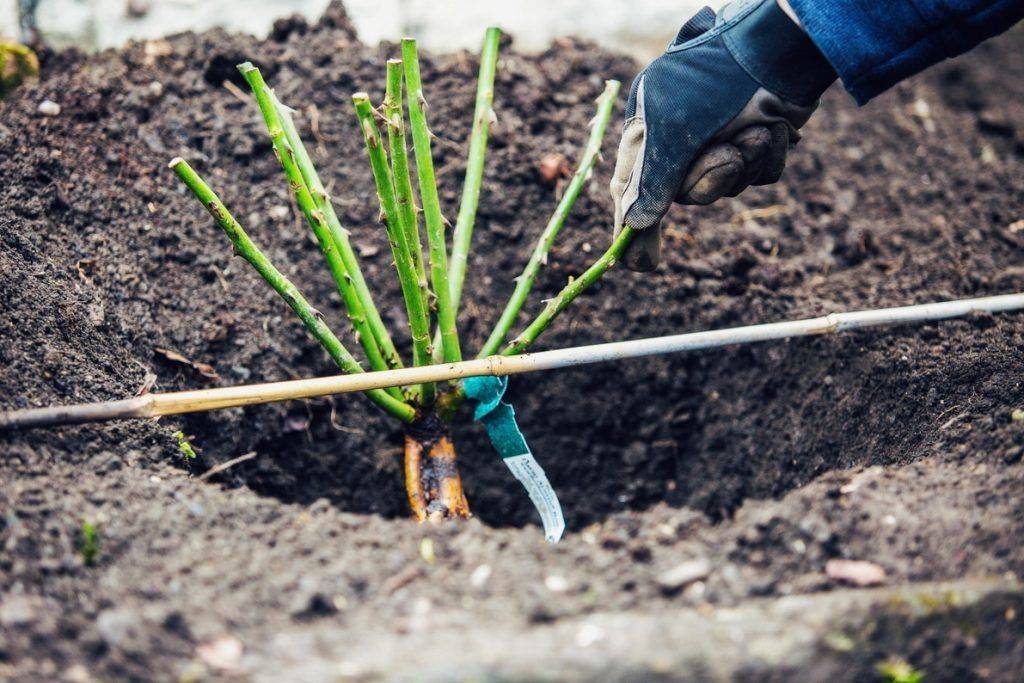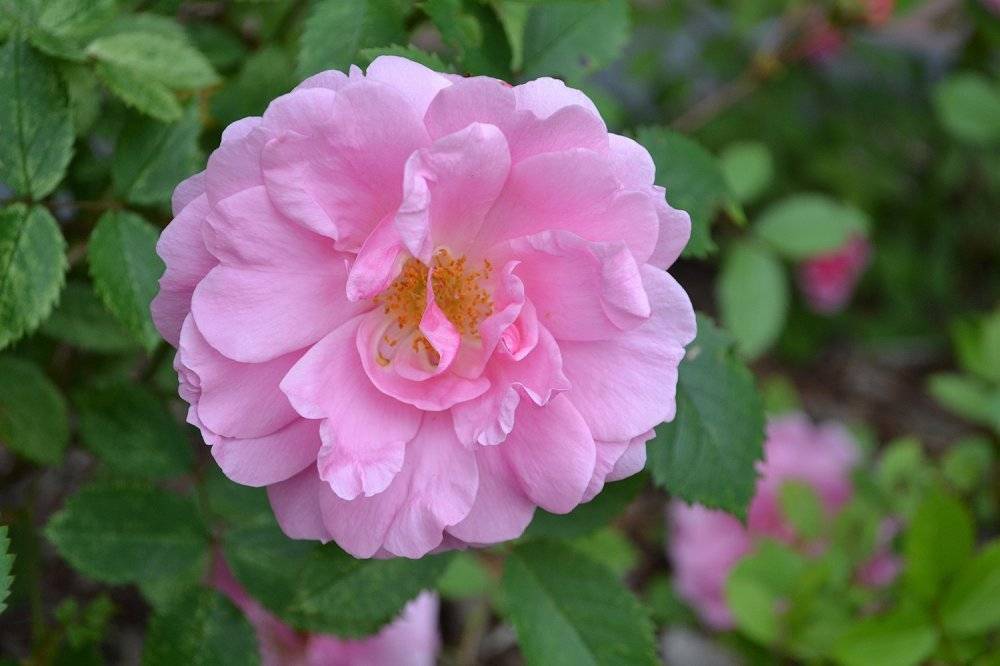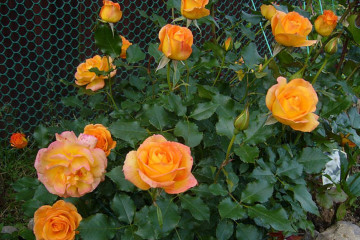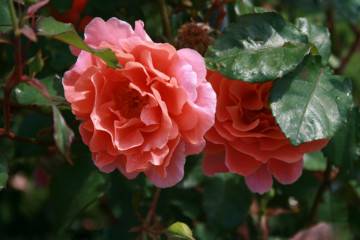Rose John Davis
Content:
Rose John Davis is considered an unpretentious plant that is resistant to diseases and adverse weather conditions. This crop was bred in Canada by breeding method. It is often used in landscape design to create beautiful compositions.
Rose John Davis (John Davis) - what kind of variety, history of creation
Rose John Davis is a hybrid crop.
It was bred on the basis of wild rose and Rugosa rose.
Brief description, characteristic
The description of the rose says that it is a shrub that is suitable for vertical landscaping. With the help of a park plant, you can decorate fences, balconies, buildings.
The bushes of this variety are strong and spreading. They reach 2 m in height and 2.5 in width. The plant has long and flexible shoots, covered with a minimum of thorns. As the bushes develop, the branches stick to the surface of the earth. The culture is characterized by small leaves of a rich green color.
Flowers form clusters of 10-15 pieces. Their diameter is 7-8 cm. The buds have a semi-double structure and rich pink color. The flowers are characterized by a yellow-beige base. After some time, they fade in the sun and acquire an ashy color.
This variety is characterized by excellent winter hardiness. The culture is able to withstand frosts down to -29 degrees without shelter. The plant is characterized by disease resistance. In adverse conditions, it can suffer from powdery mildew. There is also a risk of developing black spot. Bushes require virtually no pruning.
Advantages and disadvantages of the variety
Rose John Davis has the following benefits:
- frost resistance;
- disease resistance;
- early onset of flowering;
- abundant and lush bloom;
- resistance to sunlight;
- the possibility of using for garden decoration.
At the same time, the culture also has certain disadvantages:
- poor development in the shade;
- the need for fertile soil;
- the need for frequent and abundant watering.
Use in landscape design
Since the plant reaches a height of 2 m, it is recommended to plant it in a composition of 3-4 bushes. In this case, it is better to use roses of different colors. Such compositions go well with conifers.
Also, lupine, astilbe, armeria can be used as additions. Sage or juniper will look no less successful.
Growing a flower, how to plant it in open ground
To achieve the full development of the Canadian John Davis rose, it is recommended to pay attention to planting work.
Ready-made seedlings of the culture are considered the best option for planting. It is best to buy them in proven nurseries, controlling the quality of the planting material. You can plant a plant at different times, but it is best to do this from late spring to the first half of autumn.
Location selection
An elevated area that has a sufficient amount of natural light is suitable for a plant. In partial shade, flowering will be more scarce. In addition, the culture can be affected by disease.
How to prepare the soil and flower for planting
First of all, it is necessary to make indentations for planting the plant. At the bottom of the hole, place a composition based on peat, compost and humus. Cut the shoots by 2/3 and soak in a growth promoter.
Planting procedure step by step
When carrying out planting work, it is recommended to do the following:
- Choose a suitable sunny area with light and loose soil.
- Make a 60-70 cm depression in the ground.
- Place drainage material on the bottom.
- Place a seedling in the hole and gently spread its roots.
- Sprinkle with earth so that the root collar is 3-4 cm deep.
- Water the plant.
Plant care
Culture needs proper care. It should be comprehensive and include timely watering, pruning, and fertilization.
Watering rules and humidity
The plant must be watered abundantly. This is especially important during active growth in spring and during summer flowering. In dry weather, the soil should be moistened several times a week. This procedure is recommended in the evening. In the fall, you need to moisten the soil less often.
Top dressing and soil quality
In spring, roses need mineral fertilizers. To do this, it is recommended to take 20 g of ammonium nitrate, 10 g of potassium salt, 30 g of superphosphate for 10 liters of water. 5 liters of solution should be applied under the bush.
At the stage of bud formation, it is recommended to add 30 g of superphosphate by mixing it with a bucket of water.
Pruning and replanting
The pruning procedure must be carried out every year. It aims to remove dry and damaged branches. It is not required to replant the bushes without urgent need. If the site was selected incorrectly, the plants are moved to a new location by transshipment.
Features of wintering a flower
Before winter, the bushes must be spud. After that, it is recommended to wrap them in several layers of paper. It is also permissible to use felt.
Blooming rose
In order for a culture to grow normally and flourish, it needs to be provided with quality and balanced care.
A period of activity and rest
The flowering of the plant lasts from July to September. During this period, the culture looks very decorative. With the advent of cold weather, the rose begins a period of rest.
Care during and after flowering
During the flowering period, the plant must be watered abundantly.
In dry weather, the procedure is carried out 3 times a week. The crop should be sprayed with fungicides and insecticides several times during the season.
What to do if it does not bloom, possible reasons
The lack of flowering can be due to such factors:
- poor quality planting material;
- the development of diseases;
- pest attacks;
- cool weather.
By providing good care, disease prevention and pest control, you can achieve abundant flowering.
Flower propagation
The simplest cultivation method is considered to be cuttings. In this case, certain rules must be followed. Cuttings are recommended to be harvested in July. Take planting material from an adult plant.
The plant must be planted in the ground 2-3 cm, sprinkled with water and covered with foil. Planting material should be watered and ventilated every day. After 2-3 weeks, the shelter must be removed. After another couple of weeks, roots will begin to develop.
Diseases, pests and ways to control them
This variety is resistant to diseases and pests. He sometimes suffers from powdery mildew and black spot.To prevent such problems, spring prophylaxis should be carried out. For this, preparations based on copper are used.
Canadian rose John Davis is a popular ornamental plant that serves as a real decoration of the garden plot. To achieve lush flowering, agrotechnical recommendations should be strictly followed.
